Test Facilities and Expertise
Our experts support a broad research program in accelerator-based science.
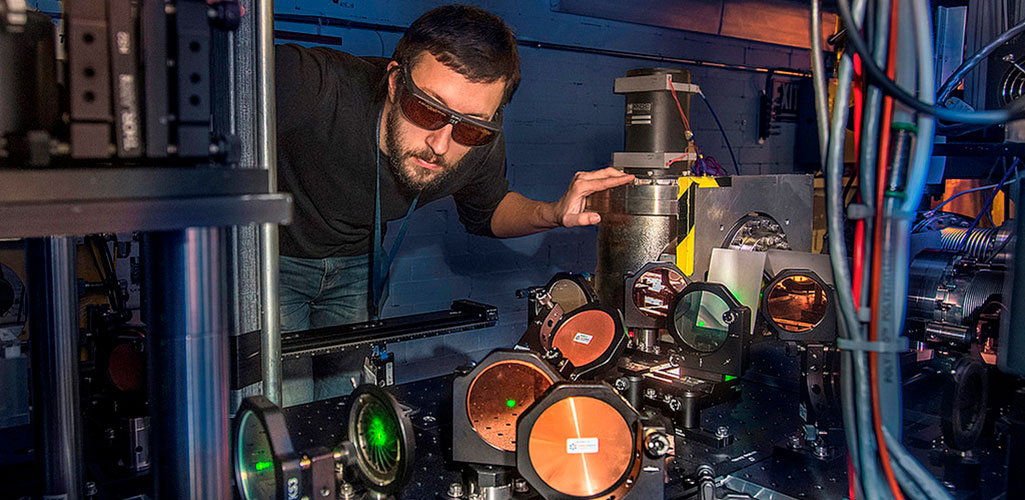
Brookhaven National Lab maintains a talented staff of accelerator experts to develop, improve, and operate the Laboratory’s suite of electron, proton, and heavy-ion accelerators. These experts enable a broad research program in accelerator-based science as well as provide support for the development and construction of new accelerator facilities to serve our national research and technology mission.
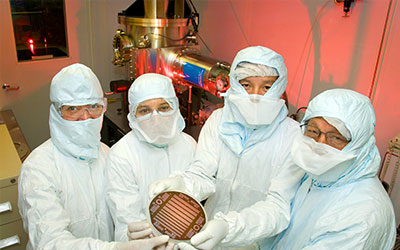
Instrumentation Department
The wide breadth of activities in Brookhaven Lab’s Instrumentation Department is enabled by a set of key capabilities including laboratories for the development of silicon sensors, gas and noble liquid detectors, and application specific integrated circuits (ASICs). We also have facilities for computer aided design of electronic devices and board level circuit designs, assembly of microelectronics, a high density interconnect laboratory, high-throughput data acquisition, and the development and production of photocathodes for detector and accelerator applications.
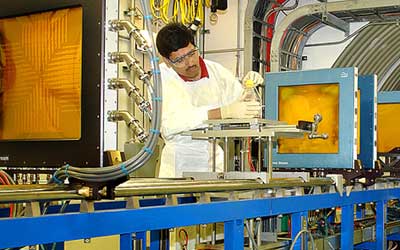
NASA Space Radiation Laboratory
The NASA Space Radiation Laboratory (NSRL) can rapidly switch between various ion species and energy combinations on any given day, with energies ranging from 50 million electron volts (MeV) per nucleon (n) to 1500 MeV/n (or even higher for protons). These expanded capabilities, collectively known as a Galactic Cosmic Ray Simulator, accurately simulate the range of particles astronauts and spacecraft might experience. NSRL staff can support facility users with all aspects of setting up an experiment, including setup in the target room, providing equipment, hardware, cabling, data acquisition expertise, special beam-associated signals, dosimetry, and beam preparation.
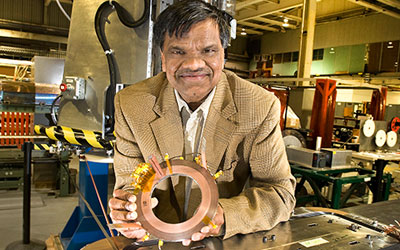
Superconducting Magnet Division
The Superconducting Magnet Division (SMD) has world-leading expertise in the physics and engineering of magnets. With more than 58,000 square feet of technical development space, and facilities to wind, heat treat, vacuum impregnate, construct, and test conventional and superconducting electromagnets and cables. SMD staff are available to work with collaborators globally to help design and build magnets for science and other applications around the globe.
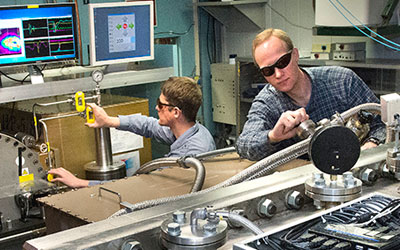
Accelerator Test Facility
The Accelerator Test Facility (ATF) is home to a high-powered, multi-terawatt and picosecond class carbon dioxide (CO2) laser and high-brightness electron beams, 20-80 million electron volt (MeV) energies with one-micron emittance. The laser and electron beams can be used independently or together to test innovative schemes for accelerating particles and producing bright beams of light. The ATF team has extensive experience working with nearly 100 users a year to design, implement, and operate challenging accelerator experiments that explore the frontiers of accelerator science and technology. As part of its Accelerator Stewardship mission, the facility provides its accelerator and laser capabilities to support society’s scientific, industrial, and security needs.
Other Test Facilities and Expertise
Relativistic Heavy Ion Collider
The RHIC accelerator complex consists of high-intensity polarized proton and ion sources and seven state-of-the-art particle accelerators that employ forefront technologies such as high-field superconducting magnets, high-power radiofrequency (RF) systems, high-gradient superconducting RF systems, a large number of high-precision beam diagnostics systems, and a sophisticated control system using the world’s most extensive particle-beam-based feedback algorithm. The heavy ion beams from the RHIC injectors are used at the NASA Space Radiation Laboratory to simulate the environment experienced by astronauts and sensitive equipment in deep space. There are also test facilities for superconducting RF cavities and magnets.
Brookhaven Linac Isotope Producer
The BLIP group has expertise in designing targets, producing and separating radioisotopes, analytical characterization, handling and processing large quantities of radionuclides, shipping radioactive materials, and the development of Good Manufacturing Practices required by the FDA for production of radioisotopes used in humans, which includes quality control and analysis.
Tandem Van de Graaff
The Brookhaven Tandems have been widely used and trusted since 1988 by more than 60 companies, laboratories and agencies from North America, Europe and Asia. Features of the Tandem facility include 50 different ion species available; accurate dosimetry with a wide range of fluxes; ion beams with continuously variable well-defined energies; continuous or high intensity pulsed beams, and more.
National Synchrotron Light Source II
The National Synchrotron Light Source II (NSLS-II) offers unique, cutting-edge research tools, including high-throughput robot-driven sample processing, coherent x-ray scattering with unprecedented spatial and temporal resolution, unprecedented energy resolution, a hard x-ray microscope with world-leading, nanometer spatial resolution. The 28 beamlines are organized into six scientific programs, based on the research techniques they offer. NSLS-II is designed to investigate both natural and syntactic materials under various conditions from multiple angles.
Accelerator Center for Energy Research
The ACER staff have expertise in radiation chemistry and advanced detection methods in pulse radiolysis, an experimental research method used to investigate the rapid chemical and physical changes that happen in matter following the absorption of ionizing radiation. Pulse radiolysis is a complementary method to laser photochemistry and electrochemistry, and it can provide an easier route to understanding the details of certain types of reactions than these other techniques.



